#welsh cavalry
Photo



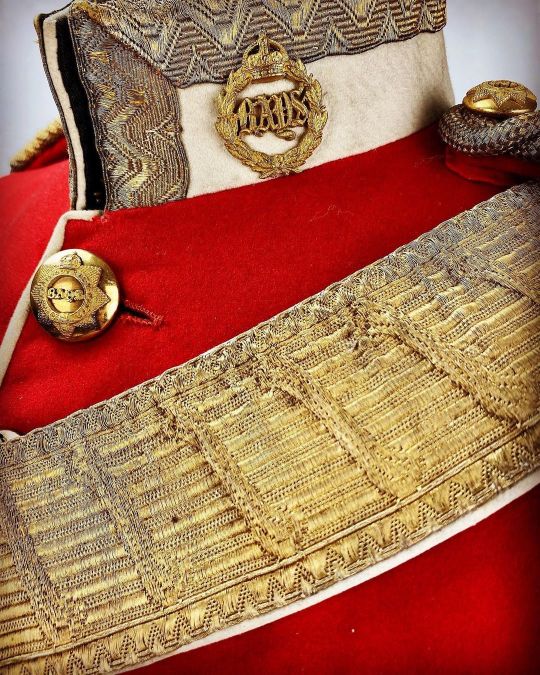
The British soldier's morale was fed not only by patriotism (`Your Country needs you') but by the unique regimental spirit that has been the envy of other armies down to the present day: one cannot let the Regiment down.
- J.M. Bereton, The British Soldier
Edwardian Queens Bays 2nd Dragoon Guards, Welsh Cavalry officer’s uniform.
#bereton#jm bereton#quote#soldier#uniform#army officer#queens bay 2nd dragoon guards#welsh cavalry#regiment#militaria#british india#patriotism#regimental spirit#british army#edwardian era#history#military history
63 notes
·
View notes
Text
The Princess of Wales Visits The Queen's Dragoon Guards Regiment


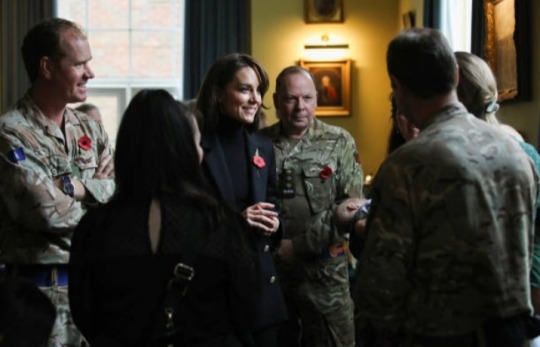

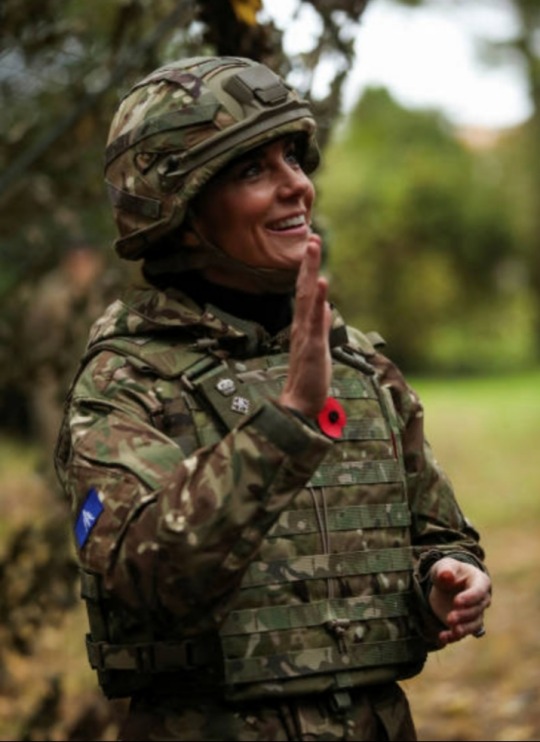




Catherine, Princess of Wales, visits The Queen's Dragoon Guards Regiment for the first time as their Colonel-in-Chief on 8 November 2023 in Dereham, England.
📸: Chris Radburn — WPA Pool / Getty Images
—
1st The Queen's Dragoon Guards (QDG) is a regiment in the Royal Armoured Corps of the British Army.
Nicknamed The Welsh Cavalry, the regiment recruits from Wales and the bordering English counties of Cheshire, Herefordshire, and Shropshire.
It is the senior cavalry regiment — the senior regiment of the line of the British Army.
#Princess of Wales#Catherine Princess of Wales#Colonel-in-Chief#Dereham#England#British Royal Family#1st The Queen's Dragoon Guards#Royal Armoured Corps#British Army#The Welsh Cavalry
9 notes
·
View notes
Text
I've never understood Scottish dwarves. Sure, they have the Highlands and a steotyplically warrior culture, but dwarves are also miners. They're craftsmen and poets. They use guerilla tactics and keep in their stone keeps, as well as engage in open battle, but they have no cavalry. They have complex naming systems and honour guests.
Dwarves are obviously welsh.
52 notes
·
View notes
Video
Months of preparation and training go into Trooping the Colour. Today members of the Household Division will perform their final major rehearsal for the event in front of members of the public in London.
With thanks to the Welsh Guards, Household Cavalry and @armyinlondon 🏴💂♂️🐴
-- The Prince and Princess of Wales
#william arthur philip louis#prince william#prince of wales#prince william of wales#william the prince of wales#kensington palace#king charles iii#his majesty king charles iii#british royal family
95 notes
·
View notes
Text


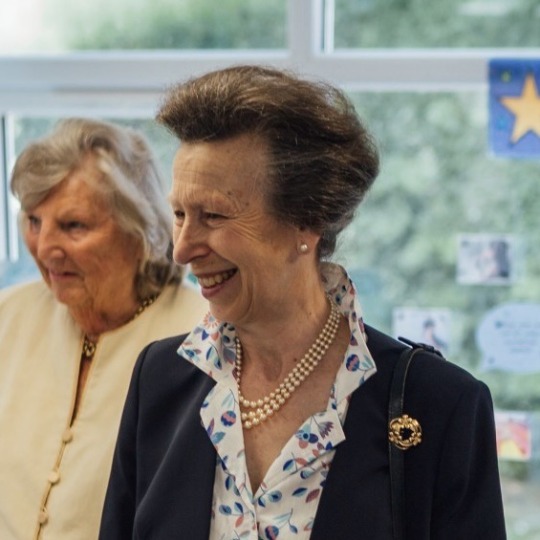


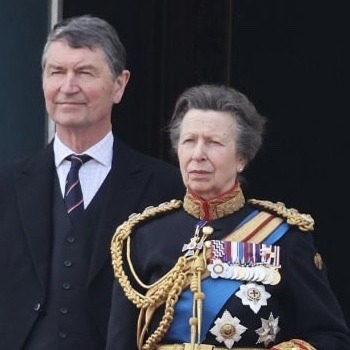

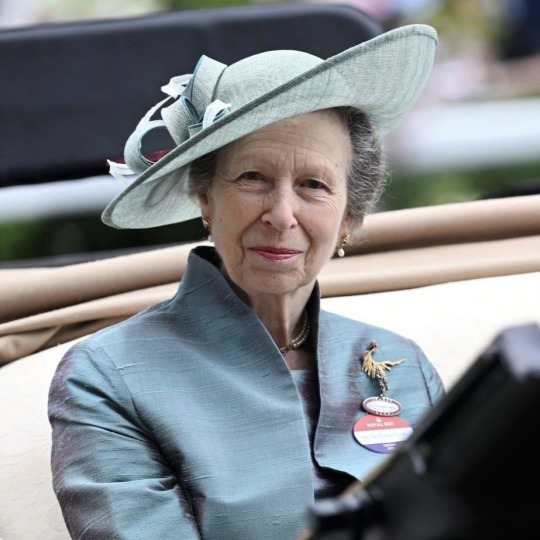
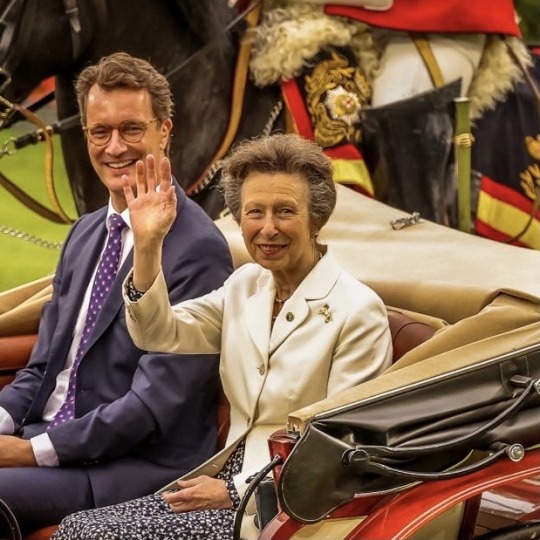
The Princess Royal’s Official Engagements in June 2023
01/06 As Colonel-in-Chief of The Royal Logistic Corps, Princess Anne attended the Freedom of the City of Winchester Parade at the Guildhall to mark the 30th Anniversary of the Corps, followed by a Service of Thanksgiving in Winchester Cathedral. 🫡
03/06 Princess Anne departed from Heathrow Airport for Canada and was received at Calgary International Airport by the Lieutenant Governor of Alberta. 🇨🇦
As President of The Duke of Edinburgh’s Commonwealth Study Conferences, HRH met with delegates and later attended a Dinner at the Banff Centre for Arts and Creativity. 🌍
04/06 As President of The Duke of Edinburgh’s Commonwealth Study Conferences, HRH attended the Opening Plenary of the Commonwealth Study Conference. She departed Calgary Airport for the United Kingdom and arrived back on 05/06 🇨🇦
06/06 As Royal Patron of Motor Neurone Disease Association, attended a Care Forum at Boughton House, Kettering. 🦠
As Master of the Corporation of Trinity House, HRH attended a Younger Brethrens’ Dinner at Trinity House, Tower Hill, London EC3. 🍽️
07/06 As Master of the Corporation of Trinity House, HRH attended the Trinitytide Anniversary Annual Court Meeting, Church Service and Luncheon at Trinity House. 🥗
The Princess Royal attended the Canadian Armed Forces Day Reception at the High Commission of Canada in the United Kingdom, Canada House, Trafalgar Square. 🇨🇦
08/06 The Princess Royal, as Honorary Air Commodore of Royal Air Force Brize Norton, attended a Parade to mark the retirement of C-130J Hercules and the disbandment of 47 Squadron at Royal Air Force Brize Norton. ✈️
Her Royal Highness, As Royal Patron of the Security Institute, HRH attended a Careers Fair at the Victory Services Club 💼
As Patron, International Students House, attended a Reception. 👨🎓
12/06 As Patron, of the British Nutrition Foundation, Princess Anne visited Washingborough Academy in Lincoln, to mark the 11th Healthy Eating Week for Schools. 🍎
As President of Carers Trust, HRH visited the new Facilities for Carers at the Carers’ Support Service at the Old Waterworks Office in Grimsby. 🩺
As Chairman of the International Olympic Committee Members Election Commission, HRH held a Dinner at St James’s Palace. 🍽️
13/06 Held an Investiture ceremony at Buckingham Palace. 🎖️
The Princess Royal, As Chairman of the International Olympic Committee Members Election Commission, held a Members Election Commission Meeting. 🤸♀️
14/06 Held two Investiture ceremonies at Windsor Castle. 🎖️
Received His Excellency Sir Rodney Williams (Governor-General of Antigua and Barbuda) and Lady Williams. 🇦🇬
15/06 The Princess Royal as Colonel of The Blues and Royals (Royal Horse Guards and 1st Dragoons) carried out the following engagements;
Attended the parading of the new Sovereign’s Standard to the Regiment followed by a Reception at Hyde Park Barracks.💂♂️
Attended a Household Cavalry Council Meeting at Hyde Park Barracks. 🐴
The new Sovereign’s Standard to The Blues and Royals was presented by HRH to HM in the Quadrangle of Buckingham Palace and was received with a Royal Salute. After the new Standard was consecrated, The Parade subsequently ranked past HM and HRH. 🚩
As President of the Royal Commission for the Exhibition of 1851, attended the Fellows’ Reception at the Royal Geographical Society. 🌍
16/06 The Princess Royal, as Colonel of The Blues and Royals (Royal Horse Guards and 1st Dragoons), presided over a Conference attended by the Colonels of the Regiments of the Household Division. HRH subsequently attended the Senior Colonels’ Dinner at Clarence House. 🫡
17/06 In her role as Colonel-in-Chief of the Blues and Royals and Gold Stick in Waiting, the Princess Royal along with Sir Tim and other members of the royal family attended King Charles first Trooping the Colour Parade as monarch. 💂♂️
His Majesty was followed by The Prince of Wales (Colonel, Welsh Guards), The Princess Royal (Colonel, The Blues and Royals, Royal Horse Guards and 1st Dragoons) and The Duke of Edinburgh (Royal Honorary Colonel, 1st Battalion London Guards) on horseback down the Mall towards Horse Guards Parade. Duchess Sophie, Sir Tim and the Duke and Duchess of Gloucester travelled in carriages and the Duke of Kent (Colonel, Scots Guards) followed by car. 🐎
The troops on Parade, under the command of Lieutenant Colonel John Livesey, Welsh Guards (Field Officer in Brigade Waiting), received The King with a Royal Salute. 🫡
After the Parade, the RF rode back to Buckingham Palace on horseback, in carriages and by car. The Household Cavalry Mounted Regiment and The King’s Troop, Royal Horse Artillery ranked past The King on arrival at Buckingham Palace. 🐴
The royal family stood on the balcony of Buckingham Palace and witnessed a fly-past by aircraft of the Royal Navy, Army and Royal Air Force. ✈️
19/06 The Princess Royal and Sir Tim with other members of the royal family and other members of the Garter attended a Chapter of the Most Noble Order of the Garter in the Throne Room, Windsor Castle.
They all later attended a Luncheon Party for the Companions of the Most Noble Order of the Garter. 🥪
An Installation Service was held in St George’s Chapel at which two new members were installed in the order. 🪶
20/06 As Colonel, The Blues and Royals (Royal Horse Guards and 1st Dragoons), attended a Dinner at Drapers’ Hall. 🍽️
Unofficial Attended day one of Royal Ascot with Zara and Mike Tindall, Peter Phillips and Lindsay Wallace 🐎
21/06 Unofficial Princess Anne, Sir Tim, Zara & Mike Tindall and other members of the RF attended day two of Royal Ascot. 🐴
22/06 Unofficial Princess Anne, Sir Tim, Zara & Mike Tindall and other members of the RF attended Ladies Day, day three of Royal Ascot. 🐴
23/06 Visited the Royal Highland Show at the Royal Highland Centre in Edinburgh where she met exhibitors, farmers, animals and sampled local food and drink. 🐮🐑🧀🏴
24/06 Attended the Icelandic Horse Society British Championships and Summer Festival at Washbrook Farm, Aston le Walls. 🇮🇸🐎
27/06 Attended the opening ceremony of the World Equestrian Festival, CHIO Aachen, Germany. 🇩🇪🐎
28/06 Toured behind the scenes and met team GB at the World Equestrian Festival, CHIO Aachen, Germany. 🇩🇪🇬🇧
29/06 The Princess Royal, as President of Carers Trust, accompanied by Sir Tim, attended a Reception in London SW1. 🦽
Princess Anne as Patron of United Kingdom Sailing Academy, accompanied by Sir Tim, attended a Founders’ Club Dinner at the Corporation of Trinity House. ⛵️
30/06 The Princess Royal presented Prize Day awards at the Royal School Haslemere. 🏆
Total official engagements for Anne in June: 40
2023 total so far: 262
Total official engagements accompanied by Tim in June : 6
2023 total so far: 56
60 notes
·
View notes
Text

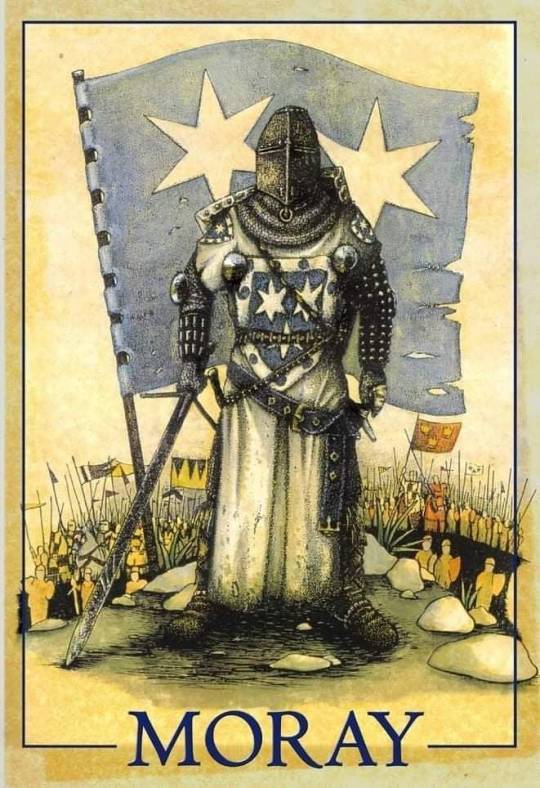


On September 11th 1297, William Wallace and Andrew de Moray led htheir troops to victory at the Battle of Stirling Bridge.
As William Wallace was leading a growing rebellion in the lowlands early in 1297, news spread of a great rising in the north led by Andrew de Moray. As events progressed, Wallace developed the use of a new tactic, later to be used with great success by Bruce, i.e. the rapid deployment of fast moving light horse to attack and harass English patrols and garrisons. These tactics pinned them back into fixed positions and made control of the countryside- the collection of taxes and provisions- difficult. With his growing success, Wallace had to manage ever greater numbers of men and hence his exploits increased in scale. As the year progressed the English commanders in Scotland grew increasingly anxious. This is shown by the worried letters to the treasury in London from Hugh Cressingham complaining about the impossibility of raising taxes in Scotland as all was in a state of unrest.
In the North, Moray had cleared out most of the English forces and linked up his forces with those of Wallace some time during the August of 1297 thereby creating a unique force, composed of both Lowlanders and Highlanders. There was a setback with the surrender at Irvine in July 1297 of an army under the command of the Earl of Carrick, Robert Bruce and Sir William Douglas. They could be seen as being the more traditional leaders, in the eyes of the country, than Wallace and Moray, but they may have had less stomach for the fight.
An English army charged with subduing Scotland left Berwick at the end of August 1297 and marched towards Stirling under the joint command of Hugh Cressingham and John de Warenne, the Earl of Surrey. The force, including many Welsh, reached Stirling on the 10th of September and was faced by a Scottish force drawn up on the foothills of the Ochils and on the Abbey Craig which overlooked the mile long causeway linking the only bridge across the River Forth to the dry ground and Stirling castle. On the morning of the 11th of September a large force of heavy cavalry and foot marched across the narrow bridge, two abreast, under the watching eyes of the Scots.
When it was deemed enough English troops had crossed, the Scots forces were given the order to charge and a group of spearmen - hidden from the eyes of the English - set off and succeeded in cutting off the bridgehead which had been formed. The English troops who had crossed the bridge were cut off from help, and were duly massacred while the greater part of the English army watched helpless on the other side of the Forth.
The tactical positioning had obviously been worked out well beforehand and the planning of the battle had, it would seem, taken up a large part of the Scots time. The timing of the rush down the causeway was crucial to the success of the Scots as, had too many English troops been allowed to cross, the final outcome could have been drastically different.
It should also be pointed out that the troops who had beaten this large semi-professional English army- a balanced force of cavalry, archers and heavy foot- were the landless peasants and not the great Scottish lords.
The Scots now had to prepare themselves for the wrath which Edward I would surely vent on his return from campaigning in France. Scotland suffered great misfortune with the death of Andrew de Moray (possibly due to wounds received at the battle) and subsequently Wallace was left in sole control of the Scottish forces and ultimately the whole country.
32 notes
·
View notes
Text
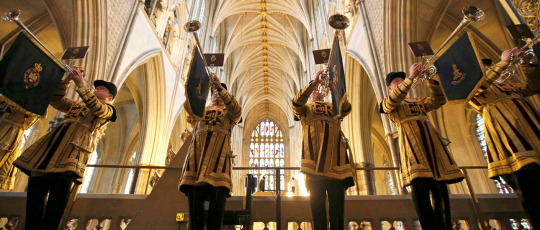
Coronation Music at Westminster Abbey
The Royal Family | Published 18 February 2023
Twelve newly commissioned pieces of music will be performed at The Coronation of Their Majesties The King and The Queen Consort at Westminster Abbey on Saturday 6 May 2023, showcasing musical talent from across the United Kingdom and the Commonwealth.
A range of musical styles and performers blend tradition, heritage and ceremony with new musical voices of today, reflecting The King’s life-long love and support of music and the arts.
His Majesty The King has personally commissioned the new music and shaped and selected the musical programme for the Service.
Andrew Nethsingha, Organist and Master of the Choristers, Westminster Abbey, will be overseeing all musical arrangements and directing the music during the Service.
Sir Antonio Pappano, Music Director for the Royal Opera House, will be conducting the Coronation Orchestra which comprises a bespoke collection of musicians drawn from orchestras of The former Prince of Wales’ Patronages including the Royal Philharmonic Orchestra.
Six orchestral commissions, five choral commissions and one organ commission, have been specially composed for the occasion by world-renowned British composers whose work includes Classical, Sacred, Film, Television and Musical Theatre. Commissioned works include a new Coronation Anthem by Andrew Lloyd Webber, a Coronation March by Patrick Doyle, a new commission for solo organ embracing musical themes from countries across the Commonwealth by Iain Farrington plus new works by Sarah Class, Nigel Hess, Paul Mealor, Tarik O'Regan, Roxanna Panufnik, Shirley J. Thompson, Judith Weir, Roderick Williams, and Debbie Wiseman.
Soloists will include bass-baritone, Sir Bryn Terfel; soprano, Pretty Yende and baritone, Roderick Williams. The organ will be played by Sub-Organist, Westminster Abbey, Peter Holder, and Assistant Organist, Westminster Abbey, Matthew Jorysz.
The official Royal Harpist Alis Huws will perform as part of the Coronation Orchestra in recognition of The King’s long-standing and deeply held relationship and affiliation with Wales. One of the liturgical sections of the ceremony will also be performed in Welsh.
At the request of His Majesty, in tribute to his late father His Royal Highness The Prince Philip, Duke of Edinburgh, Greek Orthodox music will also feature in the Service performed by the Byzantine Chant Ensemble.
The Service will be sung by The Choir of Westminster Abbey and The Choir of His Majesty’s Chapel Royal, St James’s Palace, together with girl choristers from the Chapel Choir of Methodist College, Belfast and from Truro Cathedral Choir. The Ascension Choir, a handpicked gospel choir will also perform as part of the Service and The King’s Scholars of Westminster School will proclaim the traditional ‘Vivat’ acclamations.
Fanfares will be played by The State Trumpeters of the Household Cavalry and The Fanfare Trumpeters of the Royal Air Force.
Sir John Eliot Gardiner will conduct The Monteverdi Choir and English Baroque soloists in a pre-Service programme of choral music. A small group of singers from The Monteverdi Choir will also join the main choral forces for the Service.
Music by the likes of William Byrd (1543–1623), George Frideric Handel (1685–1759), Sir Edward Elgar (1857–1934), Sir Henry Walford Davies (1869–1941), Sir William Walton (1902–1983), Sir Hubert Parry (1848–1918) and Ralph Vaughan Williams (1872–1958) has historically featured in the Service over the past four centuries and will be included in the programme along with the music of one of Britain’s most loved and celebrated living composers, Sir Karl Jenkins.
102 notes
·
View notes
Text
Book Review: Henry of Lancaster’s Expedition to Aquitaine
Henry of Lancaster’s Expedition to Aquitaine, 1345-1346: Military Service and Professionalism in the Hundred Years War serves as a detailed study of the army and campaign of the Earl of Derby in Aquitaine, a prelude to the famous Crécy campaign of King Edward III which was to follow. It is the fame of Edward’s campaign, Gribit argues, that has caused Lancaster’s Aquitaine campaign to be overlooked by historians. It is this lacuna which Gribit seeks to fill with this book.
This book is organized in nine chapters, which are divided into three sections with an additional introduction and conclusion. Part I, which consists of chapters one through four, is entitled “Henry of Lancaster and the English Army: Soldiers, Payment and Recruitment”, and provides a detailed account of the army serving under Henry of Lancaster. Chapter one contextualizes the situation which had been brewing between France and England, tracing the tensions back to the acquisition of Aquitaine by Henry II in the mid 12th century. From this beginning date, the author briefly outlines the history of violence between England and France up to the beginning of Edward’s war. Gribit then provides a detailed biographical account of Henry of Lancaster’s life up to the events of the Aquitaine campaign.
Chapter two examines the composition of the army led by Henry in Aquitaine. The indenture entered into by Henry and Edward stipulated that Henry’s force should be 2,000 men: 500 men-at-arms, 500 Welsh infantry, 500 mounted archers, and 500 unmounted archers. However, Gribit calls into question the traditional historical view of armies as being composed of either infantry or cavalry, stating that this distinction does not hold true for the method of English warfare in the fourteenth century. As such, he sets out to define each of these troop types, as well as examining the composition of Henry’s army from the point of view of troop type. Gribit also examines military rank and social status. The authors argues that the archers should be understood as comprising two different social strata, i.e. those who were mounted and those who served on foot. Archers are divided into mounted archers and unmounted archers, with it being noted that mounted archers seem to represent a distinct social class unto themselves. He also argues that mounted archers did not join battle on horseback, but rather used their mounts for transportation and the chevauchée. Finally, the Welsh infantry are described as either bowmen or spearmen, and as the lowest paid troops in an Edwardian army, represent the lowest social class.
Chapter three focuses on the logistics of raising an army. Gribit identifies two primary methods of recruitment used by the English crown in the fourteenth century: indenture and the commission of array. Indentures are described as the most useful form of recruitment when the King and his Wardrobe are not present. The indenture system allowed captains such as Henry of Lancaster to raise and administer an army as specified by the terms of the indenture to fight independently of the King. Gribit identifies this system as pivotal to the multi-front war that Edward waged in France. He draws contrasts between the indenture model and the raising of troops through a commission of array, which was the “traditional” method of raising troops. This method uses local officials to raise a large number of infantry from their area of influence, however Grubit states this method was rarely used for bringing troops to France after 1369. The raising of personal retinues and pardons as recruitment tools are also discussed before tables for the composition of Lancaster’s army are given.
The fourth chapter, and final chapter of section one, considers financial administration. In particular, Grubit seeks to reconstruct a schedule of payments and trace the path money took from the King’s coffers to the pockets of the soldiers. Certain benefits of service are examined, such as the regard, an extra payment which was given to captains of men-at-arms, and horse restoration. The particular role of the exchequer in accounting for the military is also considered.
Part II of this book is entitled “The English Expedition to Aquitaine, 1345-46.” It contains chapters five and six, and provides a detailed, chronological account of Henry of Lancaster’s two campaigns in Aquitaine in 1345 and 1346 respectively.
Chapter five focuses on the first campaign of 1345. The account begins with the arrival of Henry’s army at Bordeaux on the 9th of August, 1345. Gribit follows Henry’s movements in detail, paying particular attention to the capture of Bergerac and the battle of Auberoche. The campaign (and the chapter) ends with the onset of winter, which Henry spends in La Réole.
The sixth chapter, which examines the second campaign of 1346, begins with the siege of Aiguillon. After the siege, Lancaster embarked upon a lengthy chevauchée which would take him as far as Poitiers before returning to La Réole.
Part III consists of chapters seven, eight, and nine, and is entitled “Military Service and the Earl’s Retinue for War.” In this section, Gribit provides a detailed analysis of Lancaster’s army in 1345, as well as a general consideration of military professionalism in the fourteenth century.
Chapter seven focuses on the formation and structure of Lancaster’s 1345 retinue. Lancaster’s retinue represents the largest known military retinue from the first half of the fourteenth century, and is also exceptional in that the names of every man who served in the unit are known. Gribit begins his consideration of Lancaster’s retinue with an examination of the knights, retainers, and esquires who served in Aquitaine, and the men who served under them. He follows this with a detailed discussion on Lancaster’s knights banneret, and then the royal knights and valets Lancaster brought with him. Gribit then examines the Aquitanian knights who served under Lancaster, and finally lower status archers and attendants who accompanied the army.
Chapter eight seeks to analyze the cohesion and stability of Lancaster’s Aquitanian force. The author states that these factors were fundamental to turning Lancaster’s army into the formidable, effective fighting force that it was. In an attempt to understand the continuity of service provided by the men fighting under Lancaster, Grubit turns to an analysis by Kenneth Fowler, however Grubit disagrees with many of his findings. While Fowler argues that only a small minority of men who served with Lancaster in Aquitaine had served with him in the past, Grubit successfully argues that in fact a large majority of the men present with Lancaster in 1345 had served with him before. Some had been fighting alongside Lancaster since his service in Scotland in 1336. Grubit goes on to examine the effects camaraderie, kinship and marriage ties, and feudal obligations had on the stability of Lancaster’s force.
The ninth and final chapter of this book concerns broader questions of military careers and patterns of service. Grubit seeks to answer these questions through the service of important men who served under Lancaster in Aquitaine. In particular, Grubit examines the military histories of the many high ranking men who fought with Lancaster, and traced the number of campaigns they had served in up to 1345, the number of captains they had served under, and the earliest known date from which they had been campaigning. Grubit set his parameters for military professionalism as having served in four campaigns, and found that approximately 25% of the knights under Lancaster had met this criterion by 1345. After 1345, approximately two-thirds of Lancaster’s men would eventually serve in four or more campaigns. Grubit therefore concludes that a majority of Lancaster’s men were of a status which he considers professional.
The main body if the text is followed by a brief conclusion, an appendix which includes an transcription and translation of Lancaster’s indenture, another appendix which catalogs the men in Lancaster’s retinue, and finally a bibliography and index. This work relies very heavily upon primary documents, particularly Lancaster’s muster rolls and Edward’s exchequer rolls. A substantial body of English and French language scholarship is also referenced.
Grubit provides an intriguing analysis of an army which is generally overshadowed in modern scholarship by the more famous escapades of Edward III. His examinations are thorough and incredibly informative, however the order of the three parts of the book is somewhat confusing. Separating the two discussions on the composition of Lancaster’s army with an account of the Aquitaine campaigns was an odd choice, and the account may have been better placed at either the beginning or end of the work. Despite this modest critique, the book is a valuable work and should be enjoyed by professional historians and well read enthusiasts alike.
#book review#review#medieval#middle ages#hundred years war#henry of lancaster's expedition to aquitaine#parade#history
24 notes
·
View notes
Note
you're a cool horse person right 👉👈 could you assign horses to pathologic characters? 👉👈👉👈 yknow... if horses existed in pathologic.... (still upset and disappointed that they don't)
hi bestie. sorry for late reply, was fucking off to the mountains. ok so basically. i did something quite similar a while ago on twitter, which is a thread of. what if the characters themselves were horses right. scroll thru it [here]. MOST of Characters As Horses Horses fit for Characters WITH Horses Horses. some i'll change so lemme run thru the thread again:
"artemy normand cob or some kind of cross draft horse x quarter horse flaxen chestnut" i stand by it.

i'd also add maybe a horse like that: i've seen some this week in the mountains. no idea of the breed. some kind of creature. flaxen chestnut and nothing ELSE

"clara arabian filly" i stand by the arabian. freak 4 freak riding pair. one that doesn't have a too-fucked-up face. like that

"daniil morgan horse" eh! not for riding. i think he'd have a russian don
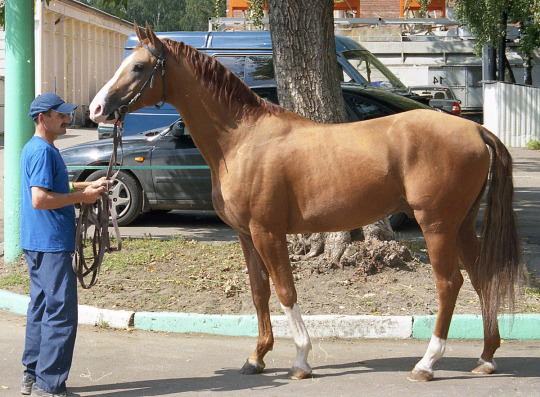
or a karachay

both were used by russian cavalry and since dankovsky's dad was a militaryman [P1 lore which i go by] i think he'd have brought his son a pony.
"the twins: marwari horse" yeah i see it.
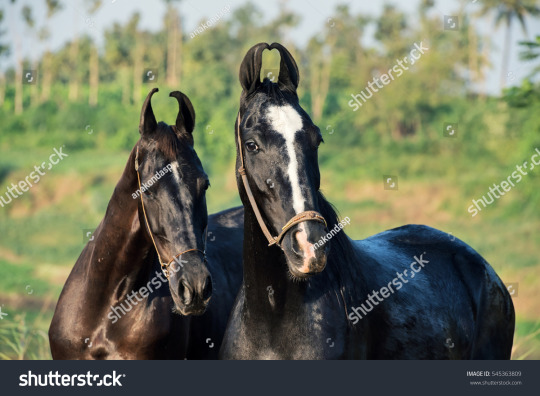
i think they'd be hard to come by but they're #special like that. otherwise shove these suckers on orlov trotters

"grace: no care for breed cremello" yeah i stand by it

"maria kaina: arabo-friesian" literally and nothing else

"caspar khan kain: icelandic pony" i stand by it.
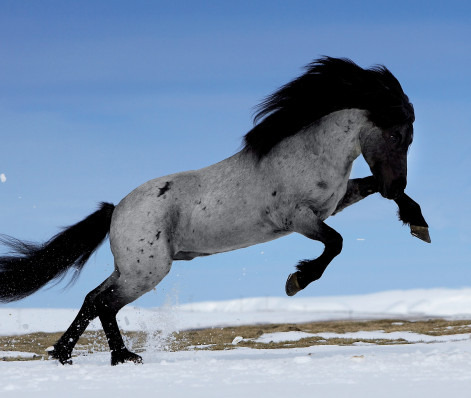
"eva yan: palomino akhal téké" i do stand by it

but in the event that they are too hard to come by, give her a betiful grey orlov trotter too
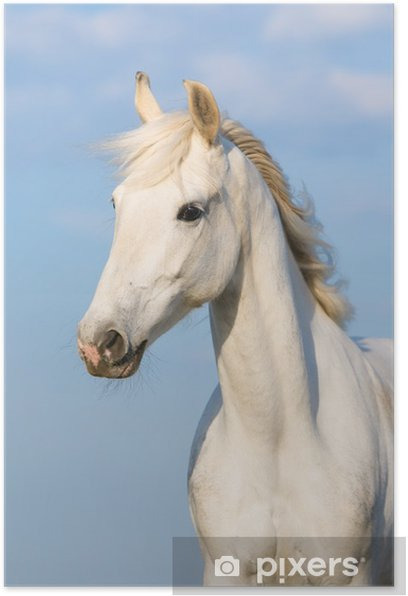
i think eva would be kinda scared of horses. also she's barefoot like babygirl stay AWAY from hooves i'm so scared for you.
"yulia lyuricheva: lipizzaner" literallyyyy

also for fun i think she's have a hucul pony

"murky" literally. just give her some kind of mini

when she becomes too tall i think she can have a little mongolian horse. they're pretty small. funny shape

"sticky mountain welsh pony" real.

hard to come by in eastern russia tho so i think he can have a mongolian horse too
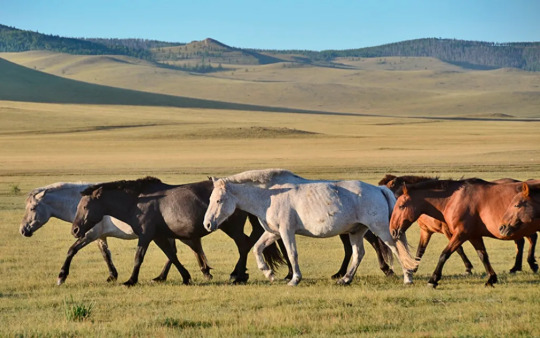
"notkin" yeah. idc about the breed. gotta be bay roan tho
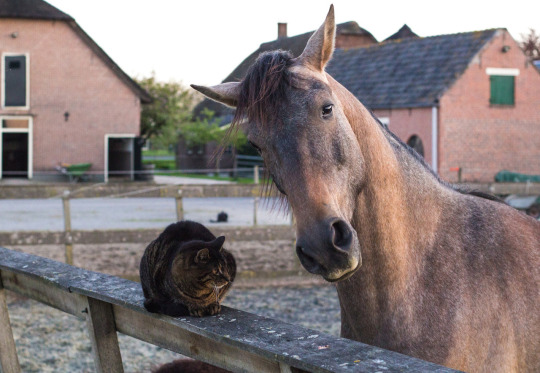
"bad grief: chestnut pinto mustang" sure. not many mustangs in eastern russia + i think horses freak him out but he can have that
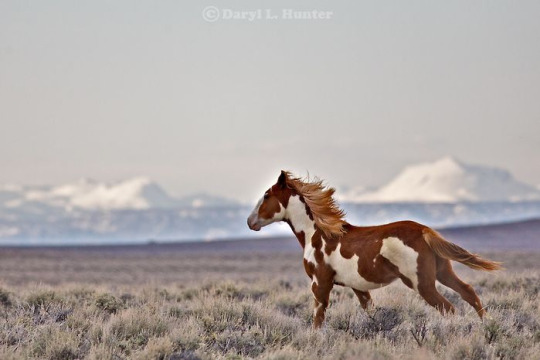
or he can get a vatkya. to snort at him

"lara ravel: blue dun lusitano" i stand by it. i also think she's not too keen on horses but she can have him. maybe brought back by dad at some point.

"rubin: Percheron. reasoning: huge" real honestly

maybe rare in eastern russian so he can also get a russian heavy draft

"mark immortell: horse with spots" real. i don't think he rides much bc of his bad leg but i bestow him a noriker to pull him around

ok. that is it for today... hmu for any character i didn't put here that you'd want bestowed a horse upon
#neigh (blabbers)#<- NEIGH FR LOL#ring ring (answers)#anonymous#horseposting#patho equestrian au#not *technically* but it's not *horse* au either. nuanced.
33 notes
·
View notes
Text
Black Blade Aldwin
This was a ballad I wrote for a creative assignment. The entire piece is in tetrameter-trimeter, so each pair of lines is 4 beats followed by 3 beats.
One merry morning midsummer’s day
A fleet doth dock in landing
For King Edward’s great French campaign
Had come to a beginning.
The bright July sky-beacon shown
The port of which they met
The great men of Saint Vaast la Hogue
Who would see no sun set.
Bretons, Germans, Welsh, English,
Did Edward send to fight
Did take the port-town those great men
Who fought until the night.
What anger seethed under his skin?
What upset that great lord?
King Edward wanted Gascony
To stay upon his board.
And so he marched his many mounts
Down South into French ground,
And on he marched towards River Seine
To sack a lovely town.
From town to town they came and went
And burned down every home,
For Edward wanted Gascony
To keep an English throne.
In Caen they burned and drank and stole
And ate their own good fill,
They all indulged save one good man
Who not had the same will.
He stayed and watched from a distance
With disdain in his heart,
This Black Blade soldier, his good soul
Denied that he take part.
That great sword, Aldwin, held his hilt
He looked over the town,
And as the smoke poured into night
Could not he but look down.
“Not ye want to take your fill
Do not ye want indulge?”
Asked one soldier unto the Blade
So did the Blade divulge:
“I take no part, this vile game
Does not entice my soul.
Had I stolen and drunk my fill
My heart be not but coal.”
The soldiers sacked Caen for five days
Yet not did Aldwin once,
He led the capture of the town
Yet not he led the hunts.
The first of August did depart
King Edward’s many blades,
And leading the front of the march
The great Aldwin’s brigade.
Across the Rivers Seine and Somme
The English fought their way,
For they needed to feed themselves
And North they made their way.
Black Blade Aldwin led the charge
That broke the French’s line,
He was no knight nor man-at-arms
Yet still he spilled blood-brine.
Further North outside Wissant
As night blazed into day,
King Edward held a council meet
Which chose to take Calais.
“Hark here my good kin, listen close,
For we have decided.”
The great King spoke, his men agreed,
No opinions divided.
“We’ll siege their gates and block their ports
Deny them any goods,
We’ll cut off all their food and drink
Deprive them of their woods.”
And so as the leaves fell from high
And changed from green to brown,
Great Edward sent his hefty men
To rupture Calais’ ground.
The men-at-arms and cavalry
Went charging at the gate,
Yet Black Blade Aldwin led no charge,
He chose to lie in wait.
Calais’ walls were heavy wrought
With moats and marshy swamps,
The charging forces stood no chance,
Their boots no place to stomp.
So settled then did King Edward
A settled camp he built,
Dubbed Nouville did the English stay
Till’ Calais’ red had spilt.
Yet Edward came and bade of him
That fabled blackened Blade,
He asked for Aldwin’s swordsmanship
Under his small tent’s shade.
“Aldwin I come to ask of you
To lead one final line.
I wish to break Calais’ thick gate,
That great door’s armored pine.”
Aldwin sat and rest his helm
Upon his leathered knee,
He thought about it long and hard
A decision made he.
“Great Edward, sir, I will oblige,
I’ll take your final run,
But do not expect blackened blades
To glisten in the sun.
I honor thee with my own soul,
I offer it to you,
For loyalty to my great land,
I’ll birth my blade anew.”
And so he led his men in front,
He tamed that wild crew,
He manned Edward’s tough men-at-arms
And led them through cold blue.
Through water, mud, and embankments
He marched his plate and steel,
He led the knights and cavalry
To Calais’ wooden seal.
Aldwin came upon the gate
That blocked his return home,
To take down this final defense
He’d sacrifice his bone.
Unleashed upon great Edward’s men
Calais fired its volley,
And out came iron pike-bearers
Who led Aldwin to folly.
Fight hard to breach the walls did he,
Did Aldwin wish to fight,
Yet to the ground his left hand fell,
Sliced by a nasty pike.
The English slayed those pike-bearers,
And fended from the arrows,
Yet before they could make their way,
Calais’ entrance had narrowed.
Much longer did the English wait,
Yet not could they shed blood,
They kept trapped the town of Calais,
Encased in bloodied mud.
‘Twas a rough day for Englishmen
For a defeat they felt,
Still not could they breach those thick walls
Yet further, Aldwin knelt.
No longer could he join the fray,
No longer his sword swung,
That Black Blade soldier, now a knight,
Was sent to see his young.
He returned to his English town,
Far sent from his short home,
Yet the battle still followed him,
And came for his land’s throne.
King Philip wished to save his folk
And act as such did he,
He called upon those noble Scots
To venge that land of thee.
And so the Scots, noble in deed,
Did they choose to comply,
At Neville’s Cross King David came
To light ablaze the sky.
The English had very few men
To protect their homeland,
Yet outnumbered ‘round two to one,
Ralph Neville did command.
He led those men of Edward’s kin,
Struck Scots from far and wide,
And of those men who Ralph had led,
The Blackened Blade did ride.
Although he only had his right,
His left did still do work,
For a plate shield mounted his wrist,
Under a blade doth lurk.
Upon his hilt, that blackened blade,
As wrought as it was born,
He entered for the final time,
A battlefield long torn.
For countrymen and kinsmanship,
Aldwin chose to protect,
The slaying of his families
A concept he’d reject.
For country, honor, and the crown,
Aldwin did dedicate,
For just a man he truly was,
Yet death he’d aggravate.
For long did he with scratch and wound,
Continue on his steed,
Until the final Scotsmen fell
And David’s push would heed.
A sad day for the Englishmen,
Again did the skies gray,
For no longer did Aldwin breathe,
Nor live another day.
The next midsummer did arrive,
One morning they did go,
His family sought to honor him,
And flowers did they grow.
They took them to his burial
And laid them on his grave,
Then came a many men for him
They wished to do the same.
For honor, glory, rectitude,
For kinsmen and for young,
The great Black Blade gave up his life,
Brought silence to his tongue.
For honor, glory, rectitude,
For family with no strife,
Great Black Blade Aldwin gave himself
For his young’s gentle life.
8 notes
·
View notes
Photo

The Royal Welsh Fusiliers face down French cavalry at the battle of Dettingen, June 27th 1743 by Sean O'Brogain.
#history#military history#british army#redcoat#redcoats#war of the austrian succession#18th century#dettingen#battle of dettingen#royal welsh fusiliers
22 notes
·
View notes
Text
Javelins are a weapon that have a weird place in Medieval European history since they seem very much to have died out in mainland Europe by the 11th century, but they were still very much in use in the British Isles, with the Welsh using them against the invading Anglo-Norman armies, all the way up to the English conquest of Wales in the 1200s and the various conflicts in Ireland, and also used in the Iberian peninsular up until the 16th century.
Now here’s where the difference pops up: in the British Isles, the javelin was exclusively used by Welsh skirmishers and Irish kerns, both a type of light infantry. In Iberia, it was a mix of heavy infantry, the Almogavars, who were styled after the Romans, and the Jinetes, a type of light cavalry that was very much Arabic in style.
2 notes
·
View notes
Text
Court Circular | 21st November 2023
Buckingham Palace
The President of the Republic of Korea and Mrs Kim Keon Hee today commenced a State Visit to The King and Queen.
The Prince and Princess of Wales welcomed The President and Mrs Kim on behalf of The King at the Four Seasons Hotel, 10 Trinity Square, London EC3.
The President of the Republic of Korea and Mrs Kim Keon Hee, accompanied by Their Royal Highnesses, drove to Horse Guards and were met by The King and Queen.
The President of the Republic of Korea and Mrs Kim Keon Hee, accompanied by The King and Queen, drove in a Carriage Procession to Buckingham Palace with a Sovereign’s Escort of the Household Cavalry.
Gun Salutes were fired in Green Park by The King’s Troop, Royal Horse Artillery, and at the Tower of London by the Honourable Artillery Company.
Guards of Honour were provided at Horse Guards by F Company Scots Guards and at Buckingham Palace by 1st Battalion Welsh Guards.
His Majesty’s Body Guard of the Honourable Corps of Gentlemen at Arms, The King’s Body Guard of the Yeomen of the Guard and a Detachment of Household Cavalry were on duty.
The King presented The President of the Republic of Korea with the Insignia of an Honorary Knight Grand Cross of the Civil Division of the Most Honourable Order of the Bath.
The President of the Republic of Korea and Mrs Kim Keon Hee, accompanied by The Duke of Gloucester, this afternoon visited the Korean War Memorial, Victoria Embankment Gardens, London SW1, where The President and Mrs Kim laid a wreath and His Royal Highness, Patron, the British Korean Veterans Association, also laid a wreath.
The President of the Republic of Korea and Mrs Kim Keon Hee subsequently met United Kingdom Korean War veterans.
The President and Mrs Kim afterwards drove to Westminster Abbey where His Excellency laid a wreath at the Grave of the Unknown Warrior.
The President of the Republic of Korea and Mrs Kim Keon Hee met General Sir Adrian Bradshaw (Governor of the Royal Hospital Chelsea) and In-Pensioners who fought in the Korean War, before touring the Abbey, escorted by the Dean (the Very Reverend Dr David Hoyle).
The President and Mrs Kim afterwards drove to the Palace of Westminster and were received by the Lord Speaker (the Lord McFall of Alcluith) and the Speaker of the House of Commons (the Rt Hon Sir Lindsay Hoyle).
The Speaker welcomed The President of the Republic of Korea and Mrs Kim Keon Hee and His Excellency delivered an Address.
The President and Mrs Kim subsequently attended a Reception with Peers, Members of Parliament and other guests.
The Rt Hon Jeremy Hunt MP (Chancellor of the Exchequer) had an audience of The King this afternoon.
The Lord Hodge (Lord High Commissioner to the General Assembly of the Church of Scotland) was received by His Majesty and reported on the recent proceedings of the General Assembly.
The King and Queen gave a State Banquet this evening in honour of The President of the Republic of Korea and Mrs Kim Keon Hee at which The Prince and Princess of Wales, The Duchess of Edinburgh, The Princess Royal and Vice Admiral Sir Tim Laurence, and The Duke and Duchess of Gloucester were present.
The following had the honour of being invited:
Suite of The President of the Republic of Korea and Mrs Kim Keon Hee:
His Excellency Mr Choo Kyungho (Deputy Prime Minister and Minister of Economy and Finance), His Excellency Mr Park Jin (Minister of Foreign Affairs), His Excellency Mr Lee Sangmin (Minister of Interior and Safety), His Excellency Mr Bang Moonkyu (Minister of Trade, Industry and Energy), His Excellency Mr Cho Taeyong (Director of National Security), His Excellency Mr Yoon Yeocheol (Ambassador of the Republic of Korea to the United Kingdom), Dr Kim Taehyo (Principal Deputy National Security Adviser), the Hon Kim Eunhye (Senior Secretary to The President for Public Relations), Dr Choi Sangmok (Senior Secretary to The President for Economic Affairs) and Ambassador Lee Choongmyon (Secretary to The President for Foreign Affairs).
Specially attached to The President of the Republic of Korea and Mrs Kim Keon Hee:
The Viscount Hood (Lord in Waiting) and the Viscountess Hood, Mr Colin Crooks (His Majesty’s Ambassador to the Republic of Korea) and Miss Sheila O’Connor (Head of VIP Visits, Protocol Directorate, Foreign, Commonwealth and Development Office).
Diplomatic Corps:
His Excellency the Ambassador of the Republic of Honduras and Mrs Mirian Nasser de Romero.
The Cabinet and Government:
The Prime Minister and Mrs Murty, the Secretary of State for Foreign, Commonwealth and Development Affairs and the Lady Cameron of Chipping Norton, the Rt Hon Oliver Dowden MP (Deputy Prime Minister), the Minister of State for the Middle East, North Africa, South Asia and United Nations and the Lady Ahmad of Wimbledon, the Secretary of State for Science, Innovation and Technology (the Rt Hon Michelle Donelan MP) and Mr T Turner, and the Leader of the House of Lords and the Lady True.
Special Invitations:
Mr Ashley Alder (Chairman, Financial Conduct Authority), Mr Andrew Bailey (Governor of the Bank of England) and Professor Cheryl Schonhardt-Bailey, Sir Timothy Barrow (National Security Adviser) and Lady Barrow, Sir Philip Barton (Permanent Under-Secretary of State for Foreign, Commonwealth and Development Affairs) and Lady Barton, Ms Jenny Bates (Director-General, Indo-Pacific, Foreign, Commonwealth and Development Office), Dr Stephen Billingham (Chairman, Urenco) and Mrs Billingham, Mr Jonathan Brearley (Chief Executive Officer, Office of Gas and Electricity Markets) and Mrs Brearley, Ms Ruth Cairnie (Chairman, Babcock International Group) and Mr Anthony Heggs, the Lord Great Chamberlain and the Lady Carrington, Mr Joshua Carrott (Co-Founder of YouTube Channel, Korean Englishman) and Ms Gabriela Kook, Sir David Chipperfield (Architect) and Lady Chipperfield, Mr Jonathan Cole (Chief Executive Officer, Corio Generation) and Mrs Cole, the Leader of the Liberal Democrats and Lady Davey, the Rt Hon Sir Jeffrey Donaldson MP (Leader of the Democratic Unionist Party at Westminster), the Leader of the Scottish National Party at Westminster and Mrs Flynn, Dame Anita Frew (Chairman, Rolls-Royce and Croda) and Mr Michael van Hemert, Ms Poppy Gustafsson (Chief Executive Officer, Darktrace Holdings Limited) and Mr Joel Gustafsson, Mr Rene Haas (Chief Executive Officer, Arm Holdings) and Ms Regina Frenkel, Mr Demis Hassabis (Co-Founder and Chief Executive Officer, DeepMind), the Speaker of the House of Commons and Lady Hoyle, General Gwyn Jenkins (Vice Chief of the Defence Staff) and Mrs Jenkins, Mr Oliver Kendal (Co-Founder of YouTube Channel, Korean Englishman) and Mrs Kendal, Dr Rosalie Kim (Lead Curator, Hallyu Exhibition, Victoria and Albert Museum), Professor Dame Ottoline Leyser (Chief Executive, UK Research and Innovation) and Professor Philip Bond, the Rt Hon the Lord Mayor and the Lady Mayoress, the Lord Speaker (the Lord McFall of Alcluith), the Lord Newby (Leader of the Liberal Democrats in the House of Lords) and the Reverend Canon the Lady Newby, Sir Kenneth Olisa (His Majesty’s Lord-Lieutenant of Greater London) and Lady Olisa, Ms Jihyun Park (Human Rights Activist) and Mr Kwanghyun Joo, Miss Sohee Park (Fashion Designer), Mr Woongchul Park (Founder and Chef Patron, Sollip) and Mrs Bomee Ki, the Lord Reed of Allermuir (President of the Supreme Court of the UK) and the Lady Reed of Allermuir, the Dowager Viscountess Rothermere (Patron of the Arts), Sir Mark Rowley (Commissioner of Police of the Metropolis) and Lady Rowley, Mr Wael Sawan (Global Chief Executive Officer, Shell Global) and Mrs Sawan, Professor Hazel Smith (Professor of International Relations, School of Oriental and African Studies, University of London) and Dr Mihail Petkovski, Ms Cho So-hyun (Footballer, Birmingham City), Dr Sarah Son (Lecturer in Korean Studies, University of Sheffield) and Mr Kyung Moon Son, the Leader of the Opposition and Lady Starmer, Mr Jakob Stausholm (Chief Executive Officer, Rio Tinto) and Mrs Stausholm, Mr Colin Thackery (Korean War Veteran) and Mrs J Simms, Dr José Vinals (Group Chairman, Standard Chartered) and Mrs Rafaela Camallonga Vilanova, Dame Emma Walmsley (Chief Executive Officer, GlaxoSmithKline) and Mr David Owen, the Lord Archbishop of Canterbury and Mrs Welby, Ms Nari Yi (Florist), and Ms Jenni Kim, Ms Jisoo Kim, Ms Lisa Manobal and Ms Rosé Park (Band Members, Blackpink).
Korean Delegation and Guests:
Mr Yonghyun Kim (Chief of Presidential Security Service), Ambassador Taejin Kim (Chief of Protocol), Mr Joo Sung Kim (Chief Physician to The President), Mr Dong Man Park (Physician to The President), Mr Jung Hwan Kim (Assistant Secretary, Office of the Personal Secretary to The President), Ms Younkyung Cho (Personal Attendant, Office of Personal Secretary to The President), Mr Jae-yong Lee (Chairman, Samsung Electronics), Mr Kwang-mo Koo (Chairman, LG Corporation), Mr Dong-bin Shin (Chairman, Lotte Corporation), Mr Dong Kwan Kim (Vice Chairman, Hanwha Corporation), Professor Myungsik Kim (Professor, King’s College London), Professor Do Young Noh (President, Institute of Basic Science), Professor Narry Kim (Professor, Institute of Basic Science), Mr Jin Ryu (Chairman, Federation of Korean Industries), Mr Kimun Kim (Chairman, Korea Federation of Small and Medium-sized Enterprises), Mr Cha Yol Koo (Chairman, Korea International Trade Association), Mr Kyung Shik Sohn (Chairman, Korea Enterprises Federation), Mr Hyun Joon Cho (Chairman, Hyosung Corporation), Mr Saehong Hur (President and Chief Executive Officer, GS Caltex Corporation), Mr Sunggeun Song (Chief Executive Officer, IL Science Company Limited), Mr Dabriel Choi (Chief Executive Officer, DC Medical, University College London) and Mr Chang Hun Yoo (Chief Executive Officer, SSenStone Incorporated).
St James’s Palace
The Princess Royal, Master, the Corporation of Trinity House, this afternoon presented Merchant Navy medals for Meritorious Service at Trinity House, Trinity Square, London EC3.
11 notes
·
View notes
Photo


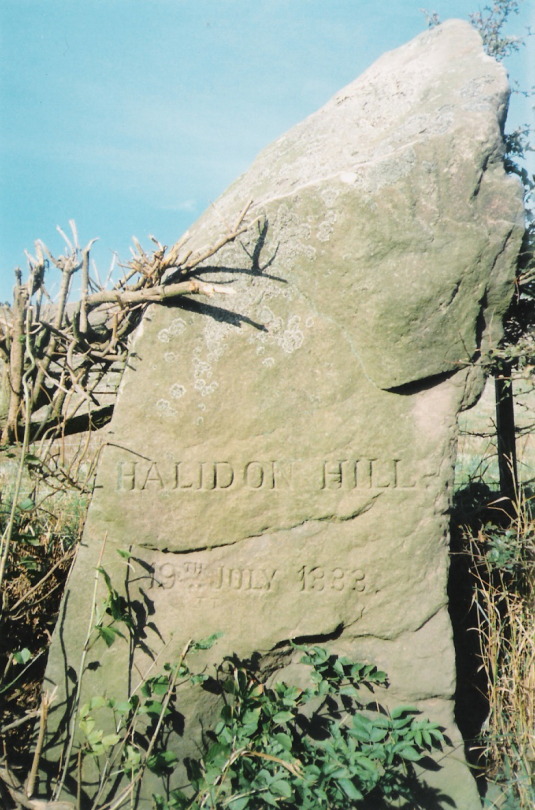
19th July 1333 saw the Battle of Halidon Hill at Berwick.
A few days ago I posted about the marriage of David II and Joan, sister of the future King of England, Edward III. The marriage was part of the Treaty of Northampton, designed to keep a lasting peace between the two countries - that peace lasted less than 5 years.
This was English mischief making at it’s worst. The son of John Balliol, Edward had eyes on ruling Scotland along with a contingent of Nobles expelled from Scotland under The Bruce, called quite aptly The Disinherited.
The year before an invasion force landed in Fife and won The Battle of Dupplin Moor. It was by no means a large force, but the invaders relied heavily on foot soldiers provided by the English king, most of whom were Welsh archers. The Scots schiltroms were enticed into a valley lined by bowman and were destroyed. The Scots losses have been estimated at 13,000 men, the invaders at just 33.
Edward Balliol marched to Scone where he was crowned King of Scots. He acknowledged King Edward as his liege lord and ceded most of southern Scotland to him. Edward now led an official invasion army north and met the Scots just north of Berwick at Halidon Hill. The Welsh archer was the king of the battlefields of Europe for a century. Edward was perfecting their use. Again these bowman decimated the Scots and survivors were mopped up by the English cavalry.
The biggest casualty of the day was Sir Archibald Douglas, brother of The Good Sir James, who was Guardian of Scotland for the boy King David II. Archibald though lacked the skill of his brother and recklessly took his army south towards Berwick where the now strengthened army of Balliol and Edward had taken the better position on Halidon Hill. The Book of Pluscarden, a Scots chronicle, describes the scene:
They (the Scots) marched towards the town with great display, in order of battle, and recklessly, stupidly and inadvisedly chose a battle ground at Halidon Hill, where there was a marshy hollow between the two armies, and where a great downward slope, with some precipices, and then again a rise lay in front of the Scots, before they could reach the field where the English were posted.
The muddy ground slowed the advance of the Scots and made them an easy target for the English archers who started their deadly barrage. As the arrows hit home at speeds of around 90mph, casualties amongst the Scottish ranks mounted.
Despite the hailstorm of arrows the Scottish forces pressed on. It was the Scottish right, under the Earl of Moray, who were first to connect with the English ranks – having seen Edward Balliol’s banner on the left of the English line they pushed hard to it. But they suffered heavily from the archer’s assault with contemporary writers describing that many “turned their faces away” from the hailstorm of arrows. Whatever force finally made it to Balliol’s men-at-arms was quickly broken.
The Scots fled downhill with the nobility hoping to get back to their horses and escape. However the dismounted English Knights now left their infantry positions, mounted their own steeds and charged the fleeing Scots. . It was a total rout with vast numbers of Scottish troops, nobility and commoner alike, killed. Those Scottish Knights who made it back to their aides had fled with their horses leaving them to their fate. Casualties have been widely exaggerated by chroniclers but likely accounted for the greater part of the original Scottish force of 14,000.
Halidon Hill was a decisive English victory that left Berwick in English hands and Scotland defenceless. But King Edward’s ambitions were in France and he did not consolidate his victory with a full scale attempt to subdue the Scots.
Balliol’s government was never accepted and in the longer term Halidon Hill simply marked a successful start to an ultimately unsuccessful strategy.
However, in a wider context, it was also the first battle fought by Edward III and proved the effectiveness of the English Longbow and dismounted men-at-arms; a configuration he would use to great effect in France.
King David fled to France and the protection given under the Auld Alliance.
With Douglas dead, Andrew Murray, son of the hero of the Battle of Stirling bridge took over the Guardianship and reverted to the tried and tested means used by Wallace, Bruce and James Douglas, retiring to the hills and conducting guerrilla warfare.
In 1335 Edward led a large army north but the Scots laid waste to the countryside ahead of him and refused to confront him. The English king reached Perth before retreating. The following year he pressed further north burning Aberdeen and still unable to find a Scots force to fight while Murray continued his policy of isolating Balliol’s allies and destroying castles that they could use.
By spring 1336, the Scots were in control of the country north of the Forth; by summer their forces were raiding into England. Edward III, now in France in the initial stages of the 100 Years War, sent an army north but it achieved nothing and withdrew.
In 1339 Baliol’s forces surrendered, he has never been recognised as a bona fide King of Scots.
Pics are a medieval depiction of Edward III at Berwick and a much later interpretation of the Scots charge, the third is a monument to the battle.
13 notes
·
View notes
Text
Andrew Parker Bowles: Her Majesty’s enduring love of dogs and horses
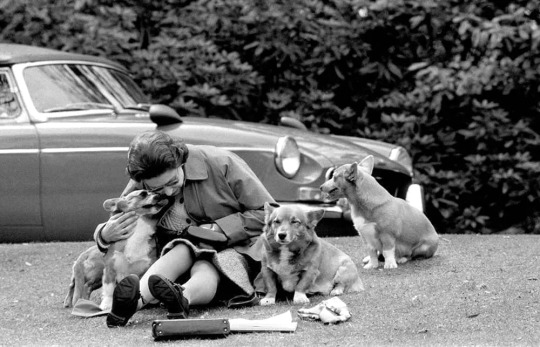
In 1995, Her Majesty was heard to remark that the worst aspect of the Parker Bowles divorce was that she had got Danny back. Danny was a corgi given to Camilla and me by the Queen in the early 1990s. She had previously given us a corgi called Windsor Flame who was wonderful, intelligent and brave. Danny had none of these qualities. He was short in looks, legs and temper. After the divorce he returned to Windsor, where he spent the rest of his life, very happy, in the care of Mrs Nancy Fenwick, who was unofficially the keeper of the Queen’s dogs.
I came to realise how much the Queen’s dogs meant to her, how much she loved them and how very knowledgeable she was about them. She owned more than 30 corgis during her lifetime. Animal psychologist Dr Roger Mugford, after watching Her Majesty feed her dogs, each in turn, eldest first, wrote: ‘There is barely anyone on the planet who could achieve that control over their dogs.’
Princess Elizabeth’s first dog was given to her by her father as a seventh birthday present. It was a Pembrokeshire corgi named Dookie. Corgis are Welsh cattle-herders by nature and are known as ‘heelers’ for their tendency to nip at the heels of the cattle to keep them moving. Human ankles can be a substitute for cattle hooves, as many a royal footman discovered. Her Majesty’s favourite corgi was said to be Susan, who after the Queen’s wedding was hidden under a carriage rug and taken by her owner from Buckingham Palace to Broadlands for her honeymoon. When Susan died, her gravestone read: ‘Susan, for almost 15 years the faithful companion of the Queen.’

‘Dorgis’ became members of the Queen’s pack as a result of an unofficial friendship between the Queen’s corgi Tiny and Princess Margaret’s miniature dachshund. The Queen was so delighted with the resulting puppies that many more dorgis were born.
Although Her Majesty never shot game, she delighted in working her labradors. Bill Meldrum (who was her gun-dog trainer and head keeper at Sandringham) was, like the Queen, very competitive. Their most successful labrador was the famous Sandringham Sydney, who won the gundog trophy at the Game Fair in 1972, 1974 and 1975. He was also pretty smart on the breeding front, covering 77 bitches in one year. In the 1980s, the royal kennels branched out into working cocker spaniels and, with Mr Meldrum in charge, they had many more competition successes.
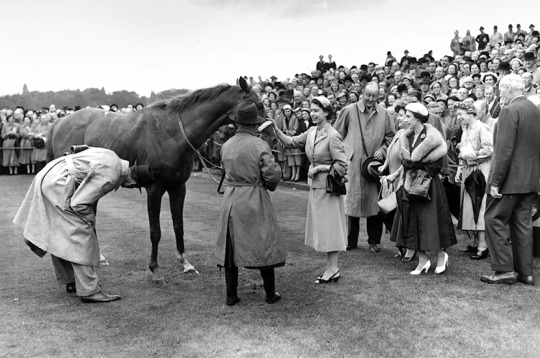
Her Majesty’s love of dogs was only matched by her love of horses. Her first pony, a small Shetland named Peggy, was a present from her grandfather, King George V, when she was four. She went on to breed a huge equine range, from small fell ponies to vast army drum horses for the Household Cavalry.
According to John Warren, the Queen’s bloodstock and racing adviser: ‘Her Majesty developed a deep profound knowledge which she consistently worked on throughout her life.’ I suspect the following Grade 1 winners would be high on her list of favourites: Aureole, Doutelle, Highclere, Carrozza and Estimate, a beautiful bay mare who won the Ascot Gold Cup in 2013, making Her Majesty the first reigning monarch to win it.
youtube
The Queen also had a great ability to see a foal, then recognise the same racehorse years later. Her knowledge of breeding was second to none and the wellbeing of her horses was very important to her. Emma Balding – whose father, husband and son all trained for Her Majesty – told me that after Magna Carta, a Royal Ascot winner, became entangled in his hay net and had to be put down, the Queen decided that none of her horses would ever have hay nets again. Once, at Polehampton, a large group of yearlings galloped flat-out towards her and her group. A couple of men panicked and dashed to the nearest railings, but the Queen told those left to stand stock-still and all would be well. And so it was. A wise and brave decision.
Unlike some racehorse owners, the Queen was very loyal to her trainers through thick and thin. She also always made sure that her horses had a happy retirement. She was a keen supporter of the charity Retraining of Racehorses and was delighted when her first registered ex-racehorse, Barbers Shop, won a prize – a rosette and a £50 Tesco voucher – in a RoR showing class.
There were, of course, many other horses the Queen was especially fond of. Burmese was a present from the Royal Canadian Mounted Police and she rode her side-saddle at the Trooping the Colour for 18 years. Doublet was bred to be a polo pony, but in the very capable hands of Princess Anne won the European Eventing Championship at Burghley in 1971. Up until last year, Her Majesty still rode Emma, a fell pony, in Windsor Great Park.

The Queen took a great interest in, and had a deep knowledge of, the Household Cavalry and the King’s Troop, and if a soldier or horse got anything wrong, she noted it and the word would come down the command chain. On a state visit, Major Ronald Ferguson, riding next to the rear carriage wheel, let his horse get too far forward. ‘Major Ferguson,’ she told him, ‘the crowd has come to see me, not you.’
Despite the Queen’s strong love for dogs and horses, the belief – occasionally implied by commentators over the years – that she cared more about animals than people is nonsense. On 20 July 1982, that horrific day when the IRA blew up the Queen’s Life Guard in Hyde Park, I was the commanding officer of the Household Cavalry Mounted Regiment. Her Majesty telephoned me that evening to commiserate. I probably banged on rather too much about the seven dead horses, and not enough about the four dead soldiers. ‘Remember you can buy more horses,’ she said, ‘but you can’t buy young soldiers.’ Our late beloved sovereign, as always, got it right. We will not see her like again. May she rest in peace, ideally surrounded by dogs and horses.
Written by: Andrew Parker Bowles, 17 September 2022, The Spectator
20 notes
·
View notes
Text
Her Majesty was represented by The Prince of Wales (Colonel, Welsh Guards) who was present at The Queen’s Birthday Parade on Horse Guards Parade this morning at which The Queen’s Colour of the 1st Battalion Irish Guards was trooped.
The Prince of Wales was accompanied by The Duke of Cambridge (Colonel, Irish Guards) and The Princess Royal (Gold Stick and Colonel, The Blues and Royals, Royal Horse Guards and 1st Dragoons).
His Royal Highness was attended by Lieutenant General Sir Edward Smyth-Osbourne (Gold Stick in Waiting and Colonel, The Life Guards), Lieutenant General Roland Walker (Regimental Lieutenant Colonel, Grenadier Guards), Lieutenant General Sir James Bucknall (Colonel, Coldstream Guards) and Major General Christopher Ghika (Major General Commanding Household Division).
The Lord de Mauley (Master of the Horse), Lieutenant Colonel Stephen Segrave, Colonel Toby Browne (Mounted Equerries in Waiting) and Colonel Crispin Lockhart (The Blues and Royals, Royal Horse Guards and 1st Dragoons, Silver Stick in Waiting) were in attendance.
Colonel Jeremy Bagshaw (Chief of Staff), Lieutenant Colonel Ralph Griffin (Silver Stick Adjutant) and the Household Division Staff were present.
The procession was led by Lieutenant Colonel James Shaw, Grenadier Guards (Brigade Major Household Division).
The Troops on Parade, under the command of Lieutenant Colonel James Aldridge, Irish Guards (Field Officer in Brigade Waiting), received The Prince of Wales with a Royal Salute.
The Duchess of Cornwall, The Duchess of Cambridge with Prince George of Cambridge, Princess Charlotte of Cambridge and Prince Louis of Cambridge, The Duke and Duchess of Sussex, Princess Beatrice, Mrs Edoardo Mapelli Mozzi and Mr Edoardo Mapelli Mozzi, Princess Eugenie, Mrs Jack Brooksbank and Mr Jack Brooksbank, The Earl and Countess of Wessex with The Lady Louise Mountbatten-Windsor and Viscount Severn, The Duke and Duchess of Gloucester, The Duke of Kent (Colonel, Scots Guards), Prince and Princess Michael of Kent, Princess Alexandra, the Hon Lady Ogilvy, Vice-Admiral Sir Tim Laurence and other Members of the Royal Family drove to Horse Guards Parade and witnessed The Queen’s Birthday Parade.
On the conclusion of the Parade, The Prince of Wales rode back to Buckingham Palace at the head of The Queen’s Guard, preceded by The King’s Troop Royal Horse Artillery, under the command of Major Francesca Sykes, the Massed Mounted Bands of the Household Cavalry, the Sovereign’s Escort of the Household Cavalry Mounted Regiment, under the command of Major Russell Bond, The Life Guards, and the Massed Bands of the Guards Division.
On arrival at Buckingham Palace, The Queen’s Guard entered the Forecourt and formed up opposite the Old Guard, the remaining Guards marching past Her Majesty, accompanied by The Duke of Kent. The Household Cavalry Mounted Regiment ranked past The Queen.
Her Majesty, from Buckingham Palace, witnessed a fly-past by aircraft of the Royal Navy, Army and Royal Air Force, led by Wing Commander James Calvert, to mark the official celebration of The Queen’s Birthday.
Royal Salutes were fired today by The King’s Troop Royal Horse Artillery in Hyde Park and from the Tower of London Saluting Battery by the Honourable Artillery Company, under the command of Major Matthew Aldridge.
- Court Circular | 2 June, 2022
#CC#CC: W#CC: C#CC: H#CC: M#William#Duke of Cambridge#britishroyalfamily#Catherine#Duchess of Cambridge#Harry#Duke of Sussex#Meghan#Duchess of Sussex#Charlotte#Princess Charlotte#Louis#Prince Louis#Archie#Archie Windsor#Archie Harrison Mountbatten-Windsor
7 notes
·
View notes